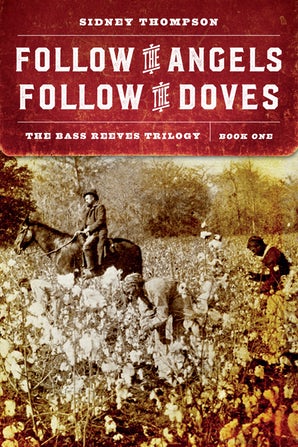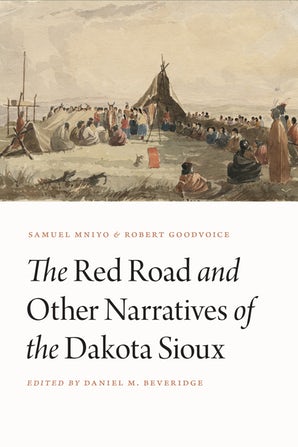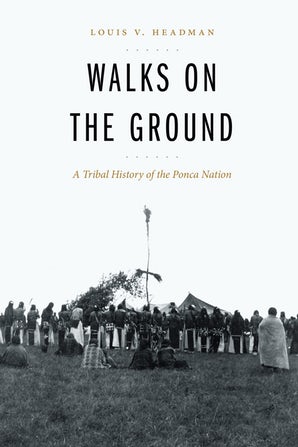
The Nebraska Publications Clearinghouse receives documents every month from all Nebraska state agencies, including the University of Nebraska Press (UNP). Each month we will be showcasing the UNP books that the Clearinghouse receives. UNP books, as well as all Nebraska state documents, are available for checkout by libraries and librarians, for their patrons, in Nebraska.
Here are the UNP books the Clearinghouse received in February 2020:

Assembling Moral Mobilities : Cycling, Cities, & the Common Good Nicholas A. Scott
In the years since the new mobilities paradigm burst onto the social scientific scene, scholars from various disciplines have analyzed the social, cultural, and political underpinnings of transport, contesting its long-dominant understandings as defined by engineering and economics. Still, the vast majority of mobility studies, and even key works that mention the “good life” and its dependence on the car, fail to consider mobilities in connection with moral theories of the common good.
In Assembling Moral Mobilities Nicholas A. Scott presents novel ways of understanding how cycling and driving animate urban space, place, and society and investigates how cycling can learn from the ways in which driving has become invested with moral value. By jointly analyzing how driving and cycling reassembled the “good city” between 1901 and 2017, with a focus on various cities in Canada, in Detroit, and in Oulu, Finland, Scott confronts the popular notion that cycling and driving are merely antagonistic systems and challenges social-scientific research that elides morality and the common good. Instead of pitting bikes against cars, Assembling Moral Mobilities looks at five moral values based on canonical political philosophies of the common good, and argues that both cycling and driving figure into larger, more important “moral assemblages of mobility,” finally concluding that the deeper meta-lesson that proponents of cycling ought to take from driving is to focus on ecological responsibility, equality, and home at the expense of neoliberal capitalism. Scott offers a fresh perspective of mobilities and the city through a multifaceted investigation of cycling informed by historical lessons of automobility.

Death at the Edges of Empire : Fallen Soldiers, Cultural Memory, and the Making of an American Nation, 1863-1921 Shannon Bontrager (Series: Studies in War, Society, and the Military)
Hundreds of thousands of individuals perished in the epic conflict of the American Civil War. As battles raged and the specter of death and dying hung over the divided nation, the living worked not only to bury their dead but also to commemorate them. President Abraham Lincoln’s Gettysburg Address perhaps best voiced the public yearning to memorialize the war dead. His address marked the beginning of a new tradition of commemorating American soldiers and also signaled a transformation in the relationship between the government and the citizenry through an embedded promise and obligation for the living to remember the dead.
In Death at the Edges of Empire Shannon Bontrager examines the culture of death, burial, and commemoration of American war dead. By focusing on the Civil War, the Spanish-Cuban-American War, the Philippine-American War, and World War I, Bontrager produces a history of collective memories of war expressed through American cultural traditions emerging within broader transatlantic and transpacific networks. Examining the pragmatic collaborations between middle-class Americans and government officials negotiating the contradictory terrain of empire and nation, Death at the Edges of Empire shows how Americans imposed modern order on the inevitability of death as well as how they used the war dead to reimagine political identities and opportunities into imperial ambitions.

Follow the Angels, Follow the Doves : The Bass Reeves Trilogy, Book One Sidney Thompson (Series: The Bass Reeves Trilogy)
Follow the Angels, Follow the Doves is an origin story in the true American tradition. Before Bass Reeves could stake his claim as the most successful nineteenth-century American lawman, arresting more outlaws than any other deputy during his thirty-two-year career as a deputy U.S. marshal in some of the most dangerous regions of the Wild West, he was a slave.
After a childhood picking cotton, he became an expert marksman under his master’s tutelage, winning shooting contests throughout the region. His skill had serious implications, however, as the Civil War broke out. Reeves was given to his master’s mercurial, sadistic, Moby-Dick-quoting son in the hopes that Reeves would keep him safe in battle. The ensuing humiliation, love, heroics, war, mind games, and fear solidified Reeves’s determination to gain his freedom and drew him one step further on his fated path to an illustrious career.
Follow the Angels, Follow the Doves is an important historical work that places Reeves in the pantheon of American heroes and a thrilling historical novel that narrates a great man’s exploits amid the near-mythic world of the nineteenth-century frontier.

The Grass Shall Grow : Helen Post Photographs the Native American West Mick Gidley
The Grass Shall Grow is a succinct introduction to the work and world of Helen M. Post (1907–79), who took thousands of photographs of Native Americans. Although Post has been largely forgotten and even in her heyday never achieved the fame of her sister, Farm Security Administration photographer Marion Post Wolcott, Helen Post was a talented photographer who worked on Indian reservations throughout the West and captured images that are both striking and informative.
Post produced the pictures for the novelist Oliver La Farge’s nonfiction book As Long As the Grass Shall Grow (1940), among other publications, and her output constitutes a powerful representation of Native American life at that time. Mick Gidley recounts Post’s career, from her coming of age in the turbulent 1930s to her training in Vienna and her work for the U.S. Indian Service, tracking the arc of her professional reputation. He treats her interactions with public figures, including La Farge and editor Edwin Rosskam, and describes her relationships with Native Americans, whether noted craftspeople such as the Sioux quilter Nellie Star Boy Menard, tribal leaders such as Crow superintendent Robert Yellowtail, or ordinary individuals like the people she photographed at work in the fields or laboring for federal projects, at school or in the hospital, cooking or dancing.
The images reproduced here are analyzed both for their own sake and in order to understand their connection to broader national concerns, including the 1934 Indian Reorganization Act. The thoroughly researched and accessibly written text represents a serious reappraisal of a neglected artist.

The Red Road and Other Narratives of the Dakota Sioux Samuel Mniyo & Robert Goodvoice; Edited by Daniel M. Beveridge (Series: Studies in the Anthropology of North American Indians)
This book presents two of the most important traditions of the Dakota people, the Red Road and the Holy Dance, as told by Samuel Mniyo and Robert Goodvoice, two Dakota men from the Wahpeton Dakota Nation near Prince Albert, Saskatchewan, Canada. Their accounts of these central spiritual traditions and other aspects of Dakota life and history go back seven generations and help to illuminate the worldview of the Dakota people for the younger generation of Dakotas, also called the Santee Sioux.
“The Good Red Road,” an important symbolic concept in the Holy Dance, means the good way of living or the path of goodness. The Holy Dance (also called the Medicine Dance) is a Dakota ceremony of earlier generations. Although it is no longer practiced, it too was a central part of the tradition and likely the most important ceremonial organization of the Dakotas. While some people believe that the Holy Dance is sacred and that the information regarding its subjects should be allowed to die with the last believers, Mniyo believed that these spiritual ceremonies played a key role in maintaining connections with the spirit world and were important aspects of shaping the identity of the Dakota people.
In The Red Road and Other Narratives of the Dakota Sioux, Daniel Beveridge brings together Mniyo and Goodvoice’s narratives and biographies, as well as songs of the Holy Dance and the pictographic notebooks of James Black (Jim Sapa), to make this volume indispensable for scholars and members of the Dakota community.

Walks on the Ground : A Tribal History of the Ponca Nation Louis V. Headman
Walks on the Ground is a record of Louis V. Headman’s personal study of the Southern Ponca people, spanning seven decades beginning with the historic notation of the Ponca people’s origins in the East. The last of the true Ponca speakers and storytellers entered Indian Territory in 1877 and most lived into the 1940s.
In Ponca heritage the history of individuals is told and passed along in songs of tribal members. Headman acquired information primarily when singing with known ceremonial singers such as Harry Buffalohead, Ed Littlecook, Oliver Littlecook, Eli Warrior, Dr. Sherman Warrior (son of Sylvester Warrior), Roland No Ear, and “Pee-wee” Clark. Headman’s father, Kenneth Headman, shared most of this history and culture with Louis. During winter nights, after putting a large log into the fireplace, Kenneth would begin his storytelling. The other elders in the tribe confirmed Kenneth’s stories and insights and contributed to the history Louis has written about the Ponca.
Walks on the Ground traces changes in the tribe as reflected in educational processes, the influences and effects of the federal government, and the dominant social structure and culture. Headman includes children’s stories and recognizes the contribution made by Ponca soldiers who served during both world wars, the Korean Conflict, the Vietnam War, Desert Storm, and the ongoing conflict in the Middle East.
**All synopses courtesy of University of Nebraska Press (https://www.nebraskapress.unl.edu/)

